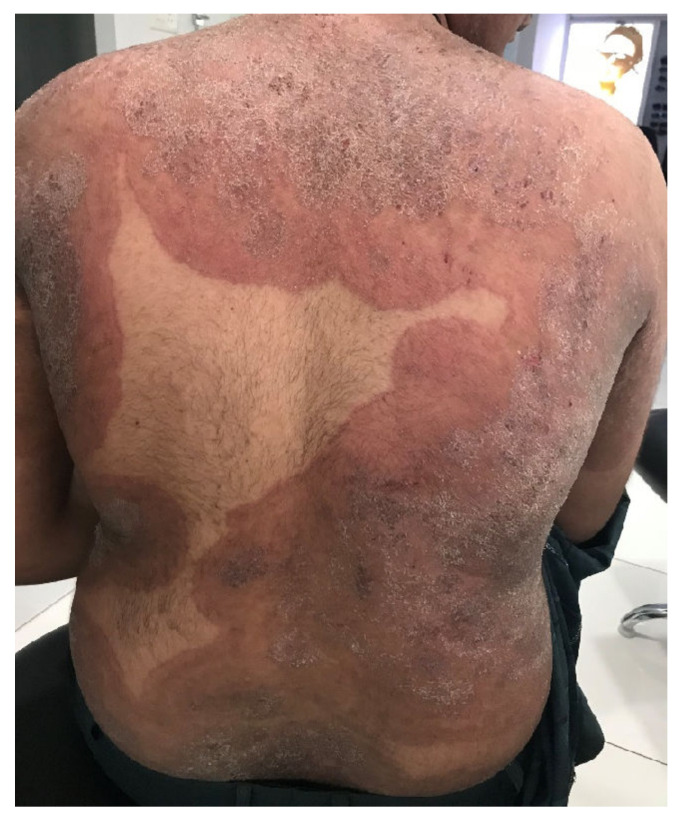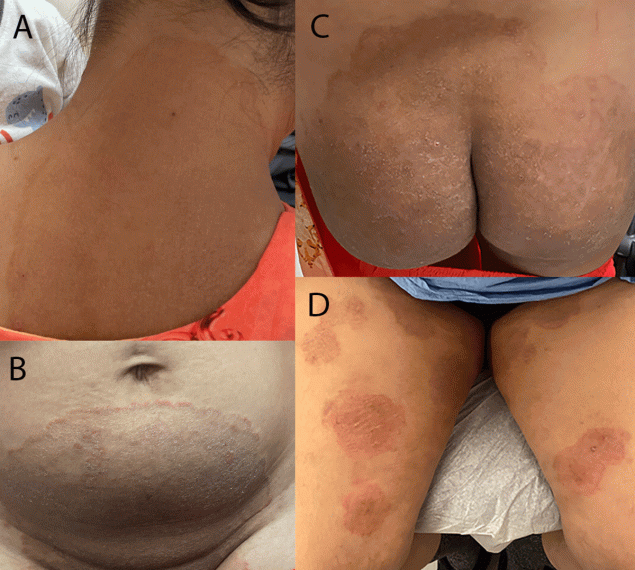Last May an interesting headline occurred in most media sources and it went something like this, “At least 2 cases of drug-resistant ringworm infections found in the U.S., CDC says.” Now maybe some of us dismissed it and others sounded the alarm and stopped rolling, but all things considered we hope to convince you as you read this article that an appropriate response is somewhere in the middle. Here are the quick take home points:
- Drug resistant ringworm and other fungal skin infections have been on the rise for the past decade
- As of this year, there is now evidence this fungus is in the USA
- Our actions with preventative measures and judicious use of treatment are the best way to deal with this infection
Continue Reading: 10min Read
Background
As you may remember from Dr. Walls’ previous article on ringworm, it is an infection by one of a handful of skin loving fungi (a.k.a dermatophytes). Recent literature indicates a new variant of dermatophyte, termed Trichophyton indotineae, was first noticed 2017 in India and has since spread in epidemic proportions throughout southeast Asia, then throughout Europe, and now has reached the USA.1 The reason this is so significant is that it has shown resistance to terbinafine (Lamisil), griseofulvin and other more common agents that we use to treat ringworm in our sport.1,2
Given the novelty of this type of ringworm infection, individuals affected have typically been seen by several doctors and treated with numerous creams and/or oral antifungals and the infection continues to spread. Its spread is no different than other ringworm infections, due to contact with infected individuals. It usually develops on the face, chest, abdomen and groin, but never on the feet or involving nails. Probably due to the inadequacy of initial treatments, it can be quite extensive with large patches 8-10 cm in diameter but otherwise it looks and feels the same as a non drug resistant ringworm infection (see figure 2).
On the positive, there is no evidence that this ringworm infection is any more lethal than others; as a reminder the lethality of ringworm is nil to none. And it’s also important to know we do have antifungal medications, such as voriconazole and itraconazole, that are effective against it.1,2
Figure 2 Lesions occurring on two patients with first reported U.S. cases of tinea caused by Trichophyton indotineae, on patient A’s neck, abdomen, and buttocks (A–C) and on patient B’s thighs (D) — New York City, December 2021–March 2023
Origins
Now the big question … how did this come about? Currently the best evidence we have is it likely has mutated from non-drug resistant strains through the selective pressure that occurs with the over usage of other agents that promote resistance development. Not every country has the same regulations of prescription grade anti-infective and anti-inflammatory medications such as combination antifungal/steroid creams that we do in the USA. Some countries allow many of these medications to be available over the counter and when used without proper medical oversight results can be disastrous. With prolonged overuse of these medications, the situation becomes ripe for selecting drug resistant strains that have mutated during the process of natural selection.
Conclusion
Conclusion
So how should this change your behavior on and off the mats? Well, ideally, if you’re showering after each time you are on the mat, routinely checking your skin and not rolling when you are sick, then it shouldn’t. Preventative measures, as discussed on this site before, are not only the same but are ever more important. Secondly, while this site is all about education and empowerment, if you do develop a rash and you are at all unsure, make sure you see a health care provider to get the right diagnosis and proper treatment. To date, T. indotinea hasn’t established a foothold in the wrestling/grappling/jiu-jitsu community … yet. But honestly it will, it’s just a matter of time.
In conclusion, the response to drug-resistant ringworm requires a united front. Seek professional medical advice, adhere to proper diagnosis and treatment and stay informed about evolving developments, something we strive to do at Jiu-Jitsu Medicine.
References
- Gupta AK, Venkataraman M, Hall DC, Cooper EA, Summerbell RC. The emergence of Trichophyton indotineae: Implications for clinical practice. Int J Dermatol. 2023 Jul;62(7):857-861. doi: 10.1111/ijd.16362. Epub 2022 Jul 22. PMID: 35867962.
- Caplan AS, Chaturvedi S, Zhu Y, Todd GC, Yin L, Lopez A, Travis L, Smith DJ, Chiller T, Lockhart SR, Alroy KA, Greendyke WG, Gold JAW. Notes from the Field: First Reported U.S. Cases of Tinea Caused by Trichophyton indotineae – New York City, December 2021-March 2023. MMWR Morb Mortal Wkly Rep. 2023 May 12;72(19):536-537. doi: 10.15585/mmwr.mm7219a4. PMID: 37167192.
- Emerging severe and antimicrobial-resistant ringworm infections. September 2023. https://www.cdc.gov/fungal/diseases/ringworm/dermatophyte-resistance.html
- Uhrlaß S, Verma SB, Gräser Y, Rezaei-Matehkolaei A, Hatami M, Schaller M, Nenoff P. Trichophyton indotineae-An Emerging Pathogen Causing Recalcitrant Dermatophytoses in India and Worldwide-A Multidimensional Perspective. J Fungi (Basel). 2022 Jul 21;8(7):757. doi: 10.3390/jof8070757. PMID: 35887512. Content ok to use under C.C. open source license.







Recent Comments